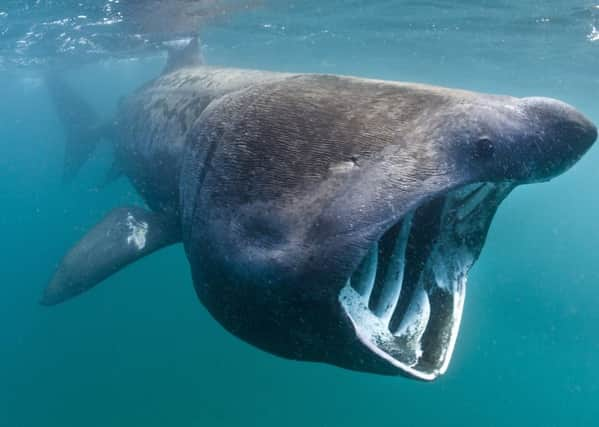‘SharkCam’ used for first time to find out secrets of Scotland’s basking sharks


The ground-breaking technology is set to reveal the secret lives of the world’s second largest fish – a species that little is known about, despite being prevalent in the waters off the west coast of Scotland.
Scientists hope the stunning images captured by the autonomous underwater vehicle (AUV) will reinforce the case for creating the world’s first protected area for basking sharks in this part of the sea.
Advertisement
Hide AdAdvertisement
Hide AdThe team used the vehicle to follow the toothless giants below the surface of the water and collect high-quality oceanographic data and wide angle high-definition video of their behaviour from a distance.
Initial footage from the innovative REMUS-100 metre rated SharkCam Robot deployed off the coast of Coll and Tiree last month shows the sharks moving through the water column, potentially searching for food, feeding near the surface and swimming close to the seabed.
It is hoped that further analysis of the many hours of video footage from the AUV, as well as visuals from towed camera tags attached to the sharks and the deployment of advanced sonar imaging, will uncover more about the underwater behaviour, social interactions, group behaviour and courtship of the species.
Dr Suzanne Henderson, marine policy and advice officer at Scottish Natural Heritage (SNH), said: “These giant fish are spectacular and watching them feed gracefully at the sea surface is such a special and memorable experience.
“This year’s collaboration has allowed us to use a combination of camera technologies and given us a glimpse of basking sharks’ underwater behaviour – a real first and very exciting.
“The footage has already made us reassess their behaviour, with the sharks appearing to spend much more time swimming just above the seabed than we previously thought.”
Fieldwork for the project – funded by WWF/Sky Ocean Rescue, SNH, the Woods Hole Oceanographic Institution and the University of Exeter – took place in July in the proposed Sea of the Hebrides Marine Protected Area, one of four currently under consultation by the Scottish Government.
Marine Protected Areas are specially designated and managed to protect marine ecosystems, habitats and species, which can help restore the area for people and wildlife.
Advertisement
Hide AdAdvertisement
Hide AdThe area is one of only a few worldwide where large numbers of basking sharks are found feeding in the surface waters each year.
It is suspected that basking sharks may even breed in Scotland – an event that has never been captured on film.